

Sir Jeans
-
Content count
266 -
Joined
-
Last visited
-
Days Won
3
Posts posted by Sir Jeans
-
-
To save myself time, I won't respond to every pm - I'll post here once all 10 lots are gone (until then, assume more are available).
-
EDIT: All seeds are now gone!
Hi all, I have a bunch of N. Rustica seeds that I don't need. Free of charge to whoever wants them. First 10 respondents will get them!
-
 2
2
-
-
I agree - don't plant any deeper than half way (vertical or horizontal), and don't bury the pup. That's what I'd do anyway. I would expect the plant to do better if it can photosynthesize.
-
Logic as a form of linear statements, such as if then is rooted in linear time scales, thus if there is no past or future then logic cannot be true in any real sense....
I am not advocating re-incarnation but it cannot be refuted by the lack of linear time, many texts which advocate re-incarnation also advocate non-linear time and state that there is no past or future but instead speak of dimensional aspects of singularities.
Perhaps as a simple concept re-incarnation is itself problematic, this phrase can mean several things and is not always employed in a consistent manner. Some speak of the re-incarnation of self as a transference of atman or spirit, others speak of it as consequence of thought itself that the concept of I as self begets a concept of serial incarnations of perceived self, in this manner the latter implies that self lacks continuity in a linear sense, something rather apt for a consideration of time as a constant singularity with multidimensional aspects.
Moreover though, re-incarnation presupposes in most every sense that an aspect of awe exists inherently in the universe which begets self perception though manifestation of forms and essences including all aspects of energy, dimensionality, physicality etc, as well as in terms of consciousness. To observe a manifestation of undifferentiated potential as differentiation of form shows multiple incarnate aspects of the inherent source, which in and of itself is by definition without characteristics. This multiplicity of incarnation of the source can be thought of as re-occurring because of it being plural, thus in this sense re-incarnation is itself the serial manifestation of energy as mass and matter itself, as well as time space.
All is self, so to speak, is a form of the doctrine of re-incarnation, this does not mean that self imposes dimensionality or is deterministic, rather this means that all is itself entity and our aspect of entity is not something biological in origination but is inherent to all matter and phenomena.
There is nothing in scientific theory that contradicts the doctrine of incarnation of energy as form and property, incarnation is itself required for re-incarnation and re-incarnation does not distinguish itself from incarnation in any profound sense. A refutation of incarnation itself is fundamental to a refutation of re-incarnation.
This does not mean that continuity exists regarding sense based consciousness, rather the opposite is frequently taught, that sense based self is an illusion and that real self is unmoving and beyond the perception of the mind, being itself mind. In an analogy an eye does not see itself to see, nor does the mind perceive itself to perceive. Memory is not self and thus the transference of self does not entail the transference of memory or persona, the doctrine of re-incarnation thus does not entail a transference of memories or personality any more than a molecule of water recalls the shape of a snowflake it was part of before it melted in the sun.
I believe in an afterlife in a sense, but not in heaven and hell or religious aspects of afterlife that are commonplace.
Beautifully put! If I understand correctly (and please forgive me if I don't!), it seems you accept a notion of reincarnation that is consistent with mainstream science. You seem to view reincarnation as a real phenomenon whereby "we" will all live future lives (to put it roughly), in the sense that we are all part of one churning universe of matter and energy, which is constantly producing new lifeforms.
I'd be interested to know if you (or anyone else) thinks that it follows from such a view that we can personally identify with other life forms within the universe as if they were ourselves (because in a sense, they are). It may not be clear what I mean by that. Put it this way: when non-living matter comes together under appropriate conditions, life and (sometimes) consciousness emerges. Life and consciousness is thus emergent from non-life and non-consciousness. All matter and energy is in a constant state of interaction.*** Thus once we die, the non-living matter and energy from which we were once composed will merge with all the rest of the non-living matter and energy, from which future life forms and consciousnesses will emerge. Speaking about future lives makes it conceptually more digestible, but it applies to all lives living today as well. So again, does this mean we can personally identify with other lives, including future ones? Can we look forward to having future experiences (although of course no vestige or memory of any "previous lives" would remain)?
If so, and this is something I've pondered for a while now, how do we deal with the problem of suffering? If we identify personally with all life in this way, then we must accept the immense suffering that most life forms experience. New lives will emerge that will experience all manner of horrors and pains (think of the insect world, for example). If we identify with other lives in the way I have tried to describe above, it seems we have innumerable, unbearably horrible experiences ahead of "us" (the same if true for wonderfully blissful experiences, as well as all other "types" - but I doubt many would be concerned about those!). It also means that there is nothing we can do about it - no amount of avoidance or practice in this lifetime will help, and there's no way to get outside of the system that produces these other lives (i.e. the universe).
Does this make any sense to anyone or does it sound as crazy to you as its starting to sound to me? If it does make sense, how do we deal with this problem? Do we really just have to accept the unacceptable? Or is it not as unacceptable as it seems? I am starting to think that we probably can't identify with other lives in this way, but I'd love to know what others think!
*** I don't know or even believe that this is the way things are. I'm just interested in what the implications would be if this is how things are.
-
EDIT - SOLD!
Pictured above is a beautiful and healthy Cleistocactus Strausii that I'd like to sell (AKA "Silver Torch cactus"). Potted in clay pot and in quality cactus soil, 21 inches tall (53 cm). Relatively fast growing cactus that will clump vigorously at the base with time. A beautiful example of such a specimen can be found at the following link:
http://mariscalcactu...ocactus_56.html
I'm not really sure how much to ask for this, so feel free to make me an offer. Happy to send it through the mail (and it would be packaged with great care!). If I post it, I'll remove it from the pot and shake off all the soil.
-
These cuttings have now been sold.
-
Tis' all good - the guy who sold it to me said he'd happily replace it
;)
-
If anyone's wondering about postage, its coming from 5006 and weighs 1.1kg. You should be able to calculate postage costs based on this info if you go to the Australia Post website. 3kg satchel seems to be the cheapest option.
-
Cheers Tipz!
-
I have only recently joined the Corroboree, but I have already sold to a few members here - when I was selling cuttings of the sausage cactus a while ago ($10 for 6"), my advert on Gumtree got quite a bit of attention when someone posted about it on these forums. Any member who bought from me will confirm that I sent my cuttings promptly and carefully packaged. I think this is where my ad was mentioned:
I have eight small T. Pachanoi tips for sale. They are all about 10cm long, except for one which is only about 7cm. They all have some scarring:
I've been selling much thicker lengths of T. Pachanoi for $10 per 6" (approx 15cm). The total length of the above tip cuttings is about 77cm. But since they are much smaller than the cuttings I usually sell, I'm thinking that half price might be fair. So if you do the math, this works out to about $25, and so thats what I'm asking for. I'd rather sell them all in one lot, but can separate if someone really wants. Local pick up or postage is fine.
-
Your most welcome everyone - happy to share my experiences!
In case my description wasn't clear, here's a diagram to show how to I cut the scions for greatest success:
The little dot in the bottom view represents the veins (for lack of the correct term) that transport energy and nutrients from the core of the cactus to each areole. I read that its important to line this up with the ring of "veins" just like when traditional grafts are done. Here's a picture of another seemingly successful graft that was cut and grafted in this way. You can see how the skin doesn't touch the stock (especially on the right). You can also see a bit of discoloration, which I think the slugs contributed to. Hopefully it'll be ok though.
I mentioned using weights instead of tape - here's a picture showing how I did that:
I used books to get it to the right height. The metal pencil case has some weight to it, and the disc on top weights 500g. The successful graft in my first post above was done with this method, and using two 500g discs instead of one. I used a folded up tissue in between the scion and the weight on top of it, and also had trimmed the spines.
Another thing that I forgot to mention - if using tape, It seems important that all four sides of the scion are taped down firmly, otherwise the untaped sides lift up when the scion dehydrates. As you can see in the photos in my first post, I didn't do this, which seems to have contributed to my first grafts failing.
One final point: I am a novice at grafting, and I don't claim that the way I did it was the best way. In fact, if anyone can see any obvious flaws with my technique, or has any suggestions on things I can do to improve my success, I'd be grateful!
I'd also be very interested if anyone knows what was wrong with the Macro cutting to start with (is this what people call "orange rot"?).
-
Hi everyone!
This is going to be my first post here, so I though I might as well start off by contributing something interesting to this forum. I recently acquired a large cutting of T. Macrogonus, but sadly, it was badly infected with some kind of (fungal?) disease. It had produced red veins going right down the length of the cutting, and when I tried to cut it out, the cut surface quickly went black and/or red. So, I decided to try an experiment - I'd heard that it was possible to graft single areoles, and I had a large, well-rooted piece of some kind of common Trichocereus that I wasn't very attached to. It was planted on its side and had produced four new shoots - four prime candidates for an areole graft!
After quite a bit of reading online, I grafted some healthy looking areoles onto each of the new shoots. I sterilized everything (including the skin of the cacti before they were cut) with isopropyl alcohol spray from a hardware store.
Unfortunately, all of these areole grafts failed - they didn't fuse with the stock plant and started to rot. So, I redid them all, refining my technique as I went. I now have four areoles that all seem to have sealed to the stock after having been grafted a week ago. Time will tell if they start to grow or not, but everything looks good so far. Here is one of the seemingly successful grafts:
The following factors seemed especially important:
- Reducing the amount of contact between scion and stock seemed to be really critical. My first grafts looked like a half-circle, with the skin touching the stock and the spines on top (see photos). As these scions started to dry out, they curved so that the center of the scion lost contact with the stock. In later grafts, I cut the edges of the scion down at an angle so that none of the skin of the scion was touching the stock, and so that the scion was thinner at the bottom than it was at the top. I can post photos of this if its not clear what I mean.
- Lots of pressure also seems critical - my first grafts were not taped down tight enough.
- Getting rid of slugs: they came out of the plant pot at night and made a bee-line for the cut surface. This resulted in infection and rot. I had to keep checking on the pot during the night (they tried to hide as soon as the light was turned on) and removing the slugs - about 15 in total (the pot was kept inside)!
I'll keep this topic updated as to whether the grafts are successful or not.

-
 4
4
-
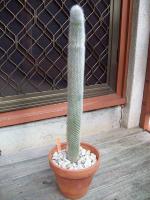
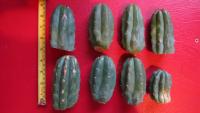
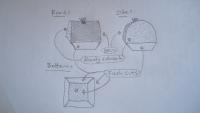
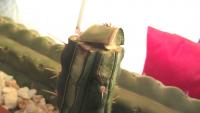


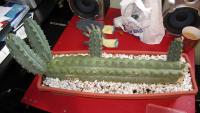
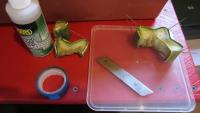
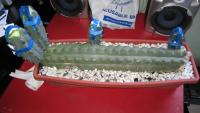
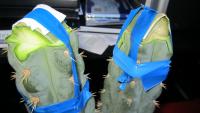
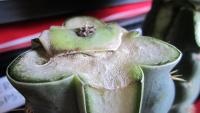
how should i plant this?
in Cacti & Succulents
Posted
I recently had great success planting a Pachanoi cutting only about 10cm long - its now thriving with a scop tip grafted onto it! I'm sure your cutting will pick up once it develops some roots. I'd leave it out of direct sunlight if I were you though.